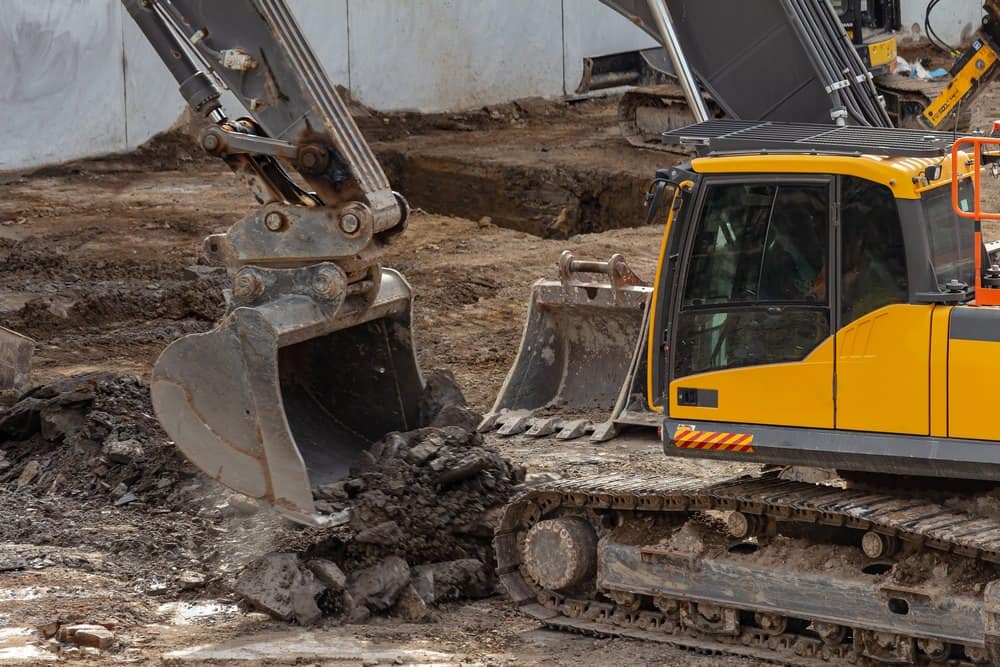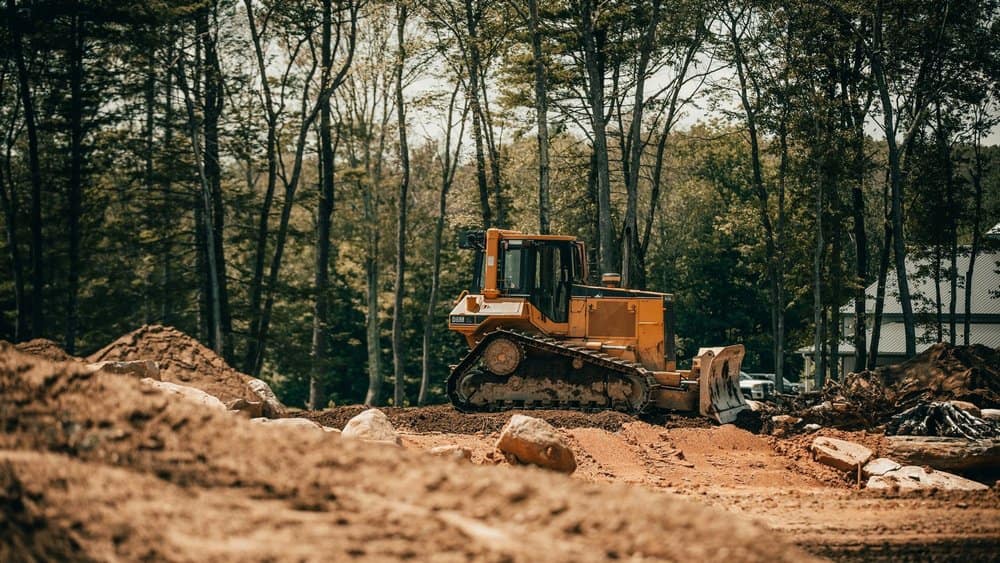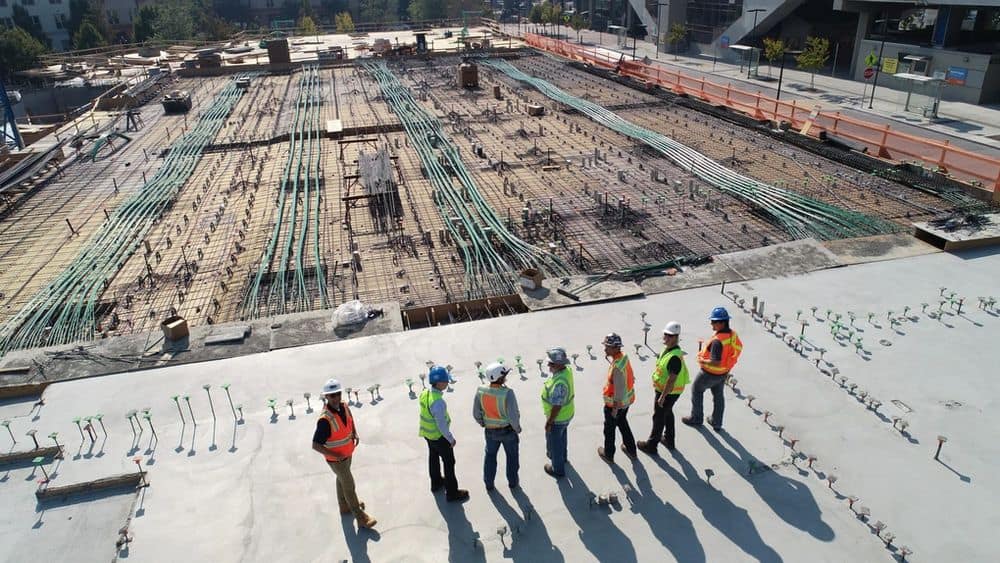
What is Backfilling?
Backfilling is the process of filling in the excavated space around a building in construction after the foundations have been poured and set. This essential step ensures the safety of the site, during construction and after the project is completed and in use, as it adds stability to the foundation, improves insulation and increases drainage around the building
Backfilling can be executed with a variety of materials, including soil and gravel, so long as the voids are filled in a firm, compact manner.
Why is backfilling important?
Effective backfilling can greatly increase the strength of a foundation and improve its performance in supporting the load of a building, especially a skyscraper. The process ensures that air pockets are removed from the ground around the foundation, and ensures deflections and depressions don’t form over time. This adds strength to the filled area around the foundation. If not done correctly, the integrity of the building could fail or result in otherwise unneeded maintenance costs.
Backfill Materials
Soil
There are two types of soil that can be utilised for backfill: coarse-grained soil and fine-graded soil.
The coarse-grain variety can consist of soil mixtures with a high sand or gravel content, with some clay and a very low amount of fines. This backfill material compacts well and the process is fairly straightforward.
Fine-graded soils can also serve this purpose. In particular, clays with gravel, sand and silt content, lean clays and mixtures with low to medium plasticity. Other options in this category are silty fine sands and clay silts. These are also known as cohesive soils.
Commercial By-Products
These backfill materials include furnace slag or fly ash and can be combined with clay to increase their plasticity. Though the use of natural sands and soils is usually more desirable, commercial by-products can do the job when those materials are inaccessible. The incorporation of this backfill depends on if it is allowed by the engineering required for the foundation.
Controlled Low-Strength Material
A cementitious substance, usually a slurry prepared from a mixture of cement, fly ash and other materials. Its main benefit is that it has a much lower density than concrete, and its runny constitution enables it to be poured into a void with ease. It flows well to fill in all corners and pockets of an excavation site.

Best Machinery for Compacting Backfill
There are many types of equipment for compacting backfill, and the options depend on the kind of backfill material and the available space around the site.
Rammers
Rammer compactors create a compression force by hitting against soil, driven by a large piston and a pair of springs, powered by petrol or diesel. It is usually angled so that the machinery jumps forward with each strike. Rammers are perfect for fine-graded soils.
Stone Spreaders
Stone spreaders are specialized machines that use high-speed conveyor belts to accurately launch gravel, sand, or crushed stone into precise locations during backfilling. They are far more efficient than traditional methods when it comes to backfilling trenches for utilities, pipes, and around foundations.
Using a stone spreader for backfilling allows crews to place material while the truck is moving, achieving backfill rates of 50+ feet per minute. This speeds up the backfilling process significantly and minimizes the need for manual raking or additional equipment like excavators. Stone spreaders also improve safety on site by reducing heavy equipment traffic close to newly poured foundations.
Plate Compactor
This piece of equipment has a plate and exciter shaft that allows it to vibrate at a low amplitude and high frequency, with a weight that creates a centrifugal force to enable the machine to move over the backfilled area. Some larger plate compactors have duplicate plates, shafts and weights, and it is able to put more force into the ground and compress material as thick as 75cm. This machine works best on coarse or granular soils and is able to fit in smaller spaces, near a foundation or structure.
Trench Rollers
Usually ridden by an operator or controlled remotely, trench rollers use padfoot drums to transfer compression force into the ground. They vary in width from 60cm to 85 cm and are mostly used for compaction around walls and structures.
What is the Best Protocol for Backfilling?
Before backfilling can even begin, the newly poured foundation should be allowed 7 days to set, to ensure it isn’t disturbed or cracked by machinery that vibrates and impacts the ground around it. The excavation site must be cleared of any debris before initiation, including stones, vegetation, and garbage, and if water has pooled in the depression it must be pumped out first.
The process of backfilling needs to be completed in steps, where the selected material is placed in the site in layers and then compacted using the equipment most suitable for the material and space. The process needs to be repeated as many times as required to fill the excavation site, to give the supporting ground as much strength as possible, and to ensure no pockets of air or softer soil remain. After each layer has been compacted with machinery, it should be moistened with water and additionally compressed with wooden logs or steel rammers.
The thickness of the backfill layers depends on the material of choice:
- The soil requires layers of 15 cm to 30 cm
- Sand or gravel needs layers of 7.5 cm to 15 cm
- Crushed stone layers can be 5 cm to 10 cm
Backfilling should commence after utilities have been installed, like drainage systems, insulation and pipping.
Safety Compliance during Backfilling
Of course, all excavation, backfilling and construction site management should be undertaken in compliance with the National Construction Code of Australia, and closely following the Work Safe Australia Code of Practice.
Scaffold competent person training ensures that safety measures are properly adhered to, minimizing the risks associated with scaffolding during construction.









